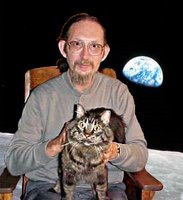Don't Ask Alice - Part the Seventh
This is the seventh installment on Dodgson's unsolved sorites - for the previous six go here:
Don't ask Alice, I don't think she'll know [from Dodgson's Symbolic Logic, p. 186]
Don't ask Alice - Part the Second [from Dodgson's Symbolic Logic, p. 187]
Don't ask Alice - Part the Third [from Dodgson's Symbolic Logic, p. 188]
Don't ask Alice - Part the Fourth [from Dodgson's Symbolic Logic, p. 190]
Don't ask Alice - Part the Fifth [from Dodgson's Symbolic Logic, p. 191]
Don't ask Alice - Part the Sixth [from Dodgson's Symbolic Logic, p. 192]
Without further ado, here is the seventh of Dodgson's [hitherto] unsolved sorites:
(1) Brothers, who are much admired, are apt to be self-conscious;
(2) When two men of the same height are on opposite sides in Politics, if one of them has his admirers, so also has the other;
(3) Brothers, who avoid general Society, look well when walking together;
(4) Whenever you find two men, who differ in Politics and in their views of Society, and who are not both of them ugly, you may be sure that they look well when walking together;
(5) Ugly men, who look well when walking together, are not both of them free from self-consciousness;
(6) Brothers, who differs in Politics, and are not both of them handsome, never give themselves airs;
(7) John declines to go into Society, but never gives himself airs;
(8) Brothers, who are apt to be self-conscious, though not both of them handsome, usually dislike Society;
(9) Men of the same height, who do not give them- selves airs, are free from self-consciousness;
(10) Men, who agree on questions of Art, though they differ in Politics, and who are not both of them ugly, are always admired;
(11) Men, who hold opposite views about Art and are not admited, always give themselves airs;
(12) Brothers of the same height always differ in Politics;
(13) Two handsome men, who are neither both of them admired nor both of them self-conscious, are no doubt of different heights;
(14) Brothers, who are self-conscious, and do not both of them like Society, never look well when walking together.
The universe is obviously the class of men, and there seem to be both properties (i.e., one-place functions) and relations (i.e., two-place functions) involved. Premise (7) is different from the others, being the only one to refer to a specific individual, John, and involving only properties of that individual. Define the following relations and properties in terms of general variables X and Y:
and applying the theorem, canceling those terms which appear both complemented and uncomplemented (shown underlined above), produces the conclusion :
ρ(b(X,Y)~h(X,Y)~[r(X)~r(Y)~]~[v(X)v(Y)]~)Now, from premise (7):
Note that this conclusion does not necessarily entail that John has any brothers – however, if he does, then the conclusion applies to all of them.ρ(b(J,Y)~h(J,Y)~[r(J)~r(Y)~]~[v(J)v(Y)]~) = ρ(b(J,Y)~h(J,Y)~[(U~)~r(Y)~]~[Uv(Y)]~) = ρ(b(J,Y)~h(J,Y)~) or "No brothers of John are John's height." Q.E.D.


0 Comments:
Post a Comment
<< Home